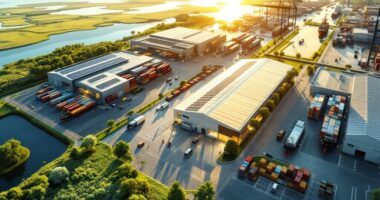Agroforestry systems ingeniously combine trees, crops, and livestock in the same land area. This ancient practice creates multi-layered landscapes that mimic natural ecosystems while boosting productivity. Farmers benefit from diversified income streams, enhanced soil health, and greater resilience against climate change. Trees provide habitat for wildlife, prevent erosion, and sequester carbon while crops thrive in their shelter. More than 1.2 billion people worldwide have discovered this sustainable approach offers elegant solutions to many agricultural challenges.

While conventional agriculture often separates trees from crops and livestock, agroforestry systems deliberately bring them together in a harmonious dance of productivity. This land management approach mimics natural ecosystems where different plant layers coexist, creating a symphony of biological interactions that benefit the entire system.
Currently practiced by over 1.2 billion people worldwide, agroforestry isn’t just some hipster farming trend—it’s an ancient practice getting modern recognition for its remarkable sustainability credentials.
Agroforestry: where ancient wisdom meets modern sustainability, feeding billions while healing the planet.
Farmers can choose from a menu of agroforestry styles like they’re ordering from nature’s restaurant. Alley cropping sandwiches rows of crops between tree lines, while silvopasture—think “silver-plated pasture” but actually just trees with grazing livestock—creates shade for animals while building soil. These systems contribute to sustainable land management through the integration of trees with agriculture, enhancing overall farm productivity and environmental services.
Forest farming, meanwhile, is like having an underground speakeasy where mushrooms and medicinal herbs thrive beneath a canopy of trees.
The environmental benefits are as stacked as the systems themselves. Trees act like soil bodyguards, preventing erosion while pumping carbon underground faster than a squirrel buries nuts. Wildlife finds refuge, water quality improves, and the farm becomes a climate change fighter—sequestering carbon like it’s going out of style (which, frankly, it should).
These carefully designed systems encourage symbiotic interactions between different biological components, ultimately leading to increased productivity compared to monocultures.
Economically speaking, agroforestry is like diversifying your investment portfolio—except with plants and animals. Farmers juggle multiple income streams, from annual crops to eventual timber harvests, creating resilience against market mood swings.
When one crop falters, another picks up the slack, creating a financial safety net woven from branches and roots. The practice’s focus on soil health helps maintain fertility for future generations without dependence on synthetic inputs.
Of course, like learning to juggle flaming torches, agroforestry requires skill and patience. The initial investment and delayed returns can scare off farmers seeking instant gratification. Management complexity increases, and components occasionally compete for resources like siblings fighting over the last cookie.
Despite these challenges, research continues to improve tree varieties, quantify ecosystem services, and optimize designs for different regions.
With growing support from policies and extension services, agroforestry stands poised to transform agriculture from environmental villain to ecological hero.
Frequently Asked Questions
What Financial Incentives Exist for Farmers Transitioning to Agroforestry?
Farmers shifting to agroforestry can access numerous financial incentives.
Government programs like EQIP and CRP provide direct payments, while tax benefits include deductions for reforestation expenses and conservation activities.
Private sector support comes from organizations like The Nature Conservancy, offering $36 million for tree planting.
Additional revenue streams emerge through diversified products ($200-$2,000 per hectare over time), carbon markets, and ecosystem service payments, making the shift financially attractive beyond conventional farming.
How Long Before an Agroforestry System Becomes Profitable?
Agroforestry profitability varies considerably based on system design. Most systems achieve profitability within 5-10 years, with fruit and nut trees reaching break-even around 7-10 years.
Timber-focused systems require more patience, typically taking 15-20 years for positive returns. Farmers can accelerate time-to-profit by integrating annual crops or livestock during the establishment phase, fundamentally creating multiple income streams while trees mature.
Economic viability depends heavily on species selection, market access, and management practices.
Which Tree Species Are Best for Specific Climate Zones?
Preferred tree species vary considerably by climate zone. Northeast regions benefit from sugar maple and red oak, which adapt well to local conditions.
Southeast areas thrive with loblolly pine and southern live oak, providing timber and shade. The arid Southwest requires drought-resistant options like mesquite and palo verde.
Tropical zones perform best with nitrogen-fixing species such as Leucaena and Gliricidia sepium.
Selecting climate-appropriate trees guarantees better growth rates, reduced maintenance costs, and increased ecosystem benefits.
Can Agroforestry Systems Qualify for Carbon Credit Programs?
Yes, agroforestry systems can qualify for carbon credit programs.
These systems sequester carbon in both plant biomass and soil organic matter, creating a potential additional income stream for farmers. Programs like the Family Forest Carbon Program, Rabobank Acorn, and Verra’s Verified Carbon Standard support these efforts.
However, participation requires maneuvering through challenges including monitoring requirements, verification processes, and the long timeframes needed for significant carbon accumulation to generate meaningful credits.
What Equipment Modifications Are Needed for Agroforestry Management?
Agroforestry management requires specialized equipment modifications to navigate complex landscapes. Key adaptations include ergonomic steps with wide treads and handrails for improved access, tractor-mounted rotary brushcutters with adjustable heights, and reinforced cabs for protection from falling debris.
Mini grain reapers help preserve grass tussocks, while drones and soil sensors enable precise monitoring. For workers with mobility challenges, mechanical lifts and wider doorways enhance accessibility, making sustainable land management more inclusive and efficient.









